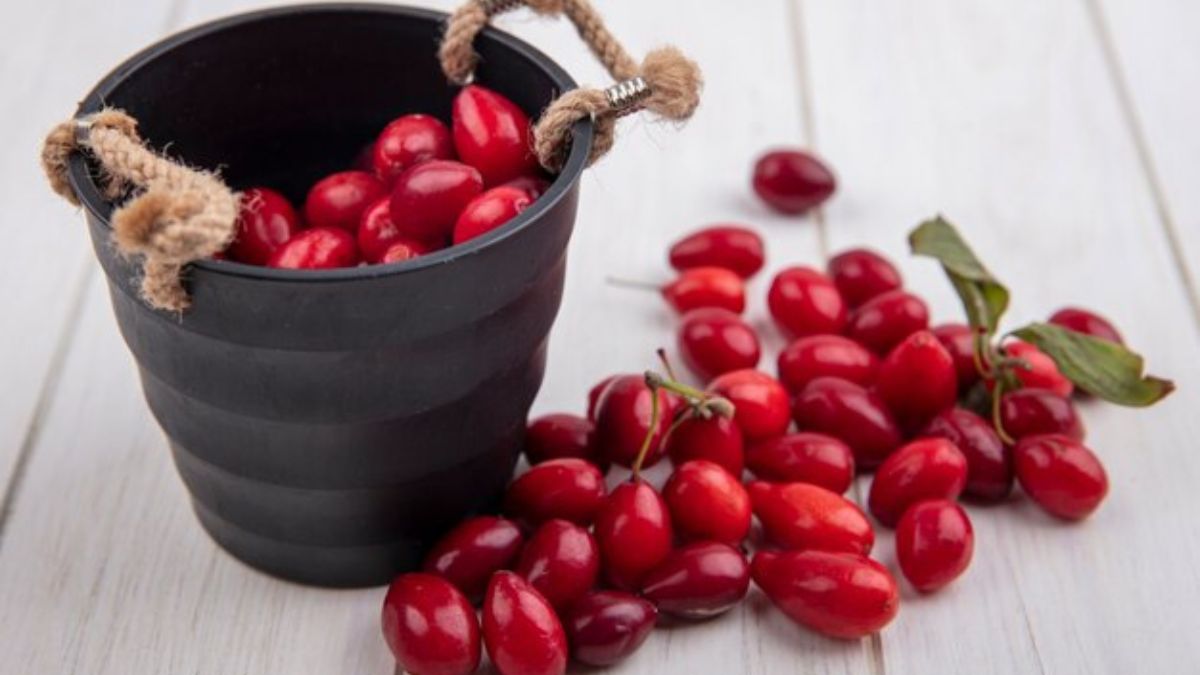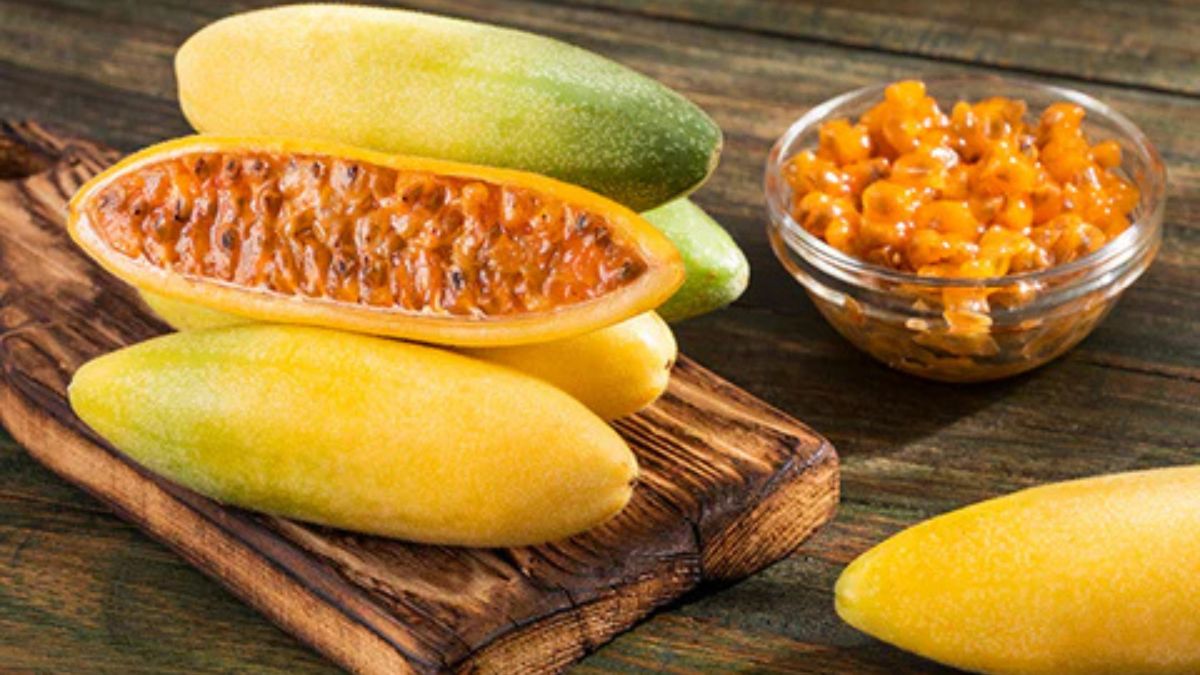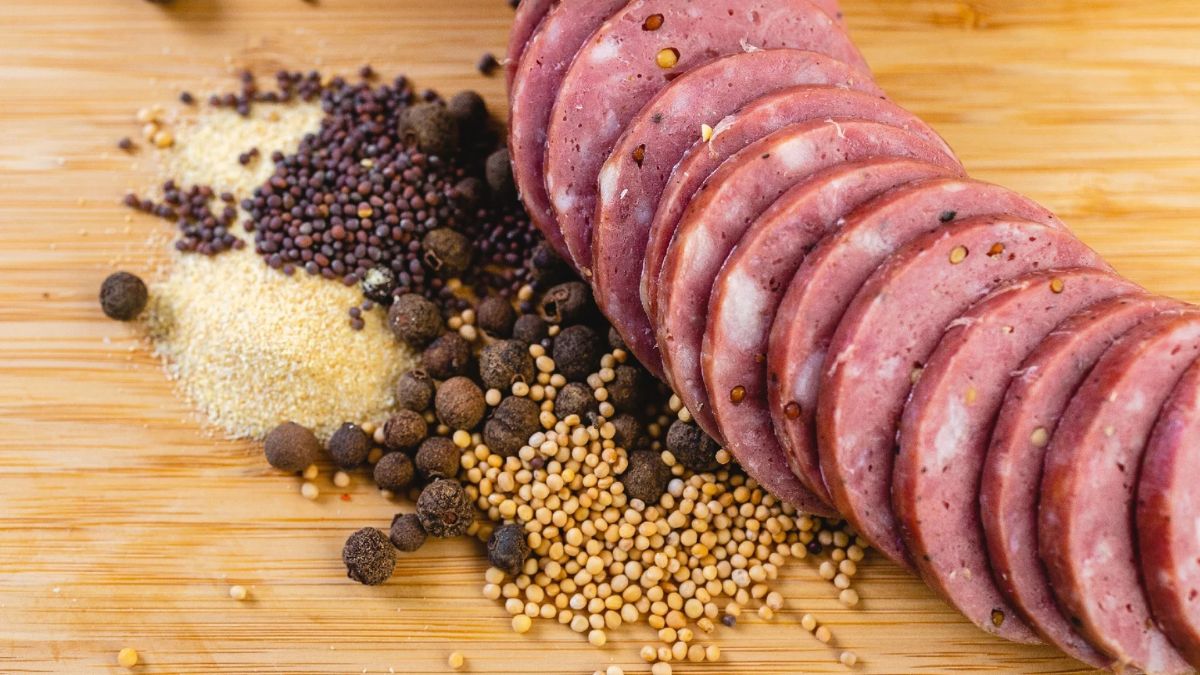FOOD
Foraging for cowberry Tips and Tricks for a Successful Harvest

If you’ve ever wandered through the woods and stumbled upon a sea of vibrant red berries, chances are you’ve encountered cowberries. These little gems are not just eye-catching; they’re packed with flavor and health benefits that make them worth foraging. Whether you’re an experienced wild food enthusiast or a curious beginner, the thrill of gathering your own cowberries can be both rewarding and delicious.
Imagine the satisfaction of picking these tart berries right from their natural habitat, knowing exactly where they came from. Cowberries thrive in cooler climates, often found carpeting forest floors during late summer to early fall. Beyond their appealing hue lies a world of culinary potential waiting to be explored.
So grab your basket and prepare for an adventure! Let’s dive into everything you need to know about successfully foraging cowberries—from health benefits to tips on making the most out of your harvest.
Health Benefits of Cowberries
Cowberries, also known as lingonberries, are small yet powerful fruits packed with nutrients. These bright red berries are rich in antioxidants, which help combat oxidative stress and reduce inflammation in the body.
Packed with vitamins C and E, cowberries support a healthy immune system. Regular consumption can enhance skin health and promote overall wellness.
Their high fiber content aids digestion, keeping your gut happy. Fiber helps regulate blood sugar levels too, making them an excellent choice for those mindful of their glucose intake.
Moreover, cowberries boast antibacterial properties that may protect against certain infections. Incorporating these berries into your diet could offer a natural boost to your body’s defenses.
With low calories but high nutritional value, cowberries can be a delightful addition to smoothies or desserts without guilt. Enjoying this superfood not only pleases the palate but also nourishes the body effectively.
Where to Find Cowberries?
Cowberries thrive in the wild, often found in boreal forests and heathland areas. These resilient little fruits prefer acidic, sandy soils with plenty of sunlight.
Seek them out during late summer to early fall when they are ripe for picking. Look beneath coniferous trees like pine or spruce; their dense shade provides an ideal environment for cowberries to flourish.
Swamps and bogs can also be fruitful locations, as these berries love moist conditions yet still require good drainage.
When scouting for cowberries, keep your eyes peeled along trails and forest edges where other plants may not compete fiercely for resources. Familiarizing yourself with local flora will help you spot clusters of vibrant red berries more easily amidst the greenery.
Bringing a field guide can aid identification too—there are look-alikes that could lead to confusion if you’re not careful!
Tools and Equipment for Foraging
Having the right tools can make your foraging experience both enjoyable and efficient. Start with a sturdy basket or bag to collect your cowberries. Look for something breathable, as it helps prevent bruising.
A pair of gloves is handy too. They protect your hands while you navigate through thorny bushes or rough terrain.
Consider bringing along a small trowel or hand shovel if you plan on digging up plants or roots in addition to berries. A lightweight knife can also be useful for cutting stems.
A field guide specific to cowberries will help identify them correctly among similar-looking plants. Don’t forget water and snacks; staying hydrated keeps you focused during long hours outdoors.
A map of local areas known for cowberry growth can lead you straight to fruitful spots without unnecessary wandering.
Safety Precautions for Foraging
Foraging can be an exciting adventure, but safety should always come first. Before heading out, familiarize yourself with the area and its potential hazards. This might include rough terrain or wildlife encounters.
Always wear appropriate clothing and sturdy shoes. Long sleeves and pants protect against scratches from branches and insect bites. A good pair of boots can handle wet or uneven ground.
Be mindful of your surroundings. Avoid foraging near roadsides where chemicals may have been used on plants. Additionally, steer clear of areas that may have been treated with pesticides.
It’s essential to know what you’re picking. Misidentifying plants can lead to serious health risks, so invest time in learning about cowberries specifically before your trip.
Tell someone where you’re going before setting off on your foraging journey. It adds an extra layer of safety just in case you find yourself in a tricky situation.
Tips for a Successful Harvest
Timing is crucial when foraging for cowberries. Aim to harvest them in late summer or early fall. This is when they reach their peak ripeness, displaying a vibrant red color.
Look for healthy patches where the plants grow abundantly. They often thrive in acidic soils and can be found in forests or along trails.
Use gentle techniques while picking to avoid damaging the plant. A small basket or bag will keep your berries safe during transport.
Consider bringing a friend along; it makes the experience more enjoyable and provides an extra set of eyes to spot those elusive berries.
Remember to leave some behind so nature can regenerate itself. Sustainability ensures that you can return year after year for another fruitful harvest!
Recipes Using Cowberries
Cowberries are a delightful addition to various recipes, bringing both flavor and nutrition. One popular way to enjoy them is by making a tangy cowberry sauce. Simply simmer the berries with sugar and water until thickened, perfect for drizzling over meats or pancakes.
For something sweet, consider baking cowberry muffins. Just fold fresh or frozen cowberries into your favorite muffin batter for a burst of tartness in each bite. They pair beautifully with chocolate chips too!
Another delicious option is crafting a refreshing cowberry smoothie. Blend ripe bananas, yogurt, honey, and a handful of cowberries for a vibrant drink that’s as nutritious as it is tasty.
Don’t overlook preserves; homemade cowberry jam can brighten up any breakfast table. Spread it on toast or incorporate it into desserts like cheesecakes for an extra layer of flavor.
Conclusion
Foraging for cowberries can be a rewarding adventure. Not only do you get to enjoy the great outdoors, but you also reap numerous health benefits from this nutritious fruit. With the right tools and preparations, your harvest can be successful and plentiful.
Whether you’re collecting them for homemade jams or simply savoring their tart flavor in desserts, knowing where to find cowberries is key. Always prioritize safety during your foraging trips. Familiarize yourself with the environment and ensure you’re picking within sustainable guidelines.
With some practice and these handy tips, you’ll soon become a pro at locating and harvesting cowberries. Enjoy experimenting with new recipes that feature this delightful berry as you expand your culinary horizons. Happy foraging!
FOOD
E622 Explained: The Hidden Ingredient in Your Favorite Foods

Have you ever glanced at a food label and wondered what E622 really is? If so, you’re not alone. This mysterious ingredient pops up in many of our favorite snacks and meals, raising eyebrows and questions among health-conscious consumers. Known as sodium glutamate or monosodium glutamate (MSG), it’s often shrouded in controversy. While some people embrace its flavor-enhancing qualities, others are wary of its potential effects on health.
In this blog post, we’ll take a closer look at E622—unpacking its role in the foods we love, exploring the debates surrounding it, and offering tips for navigating your diet if you’re keen to avoid it. Let’s dive into the world of E622!
The Controversy Surrounding E622
E622, also known as sodium glutamate, has sparked heated debates among consumers and health experts alike. While many enjoy its flavor-enhancing properties in various dishes, others raise concerns about its safety.
Some studies suggest a link between E622 and adverse reactions like headaches or allergic responses. This raises questions about how sensitive individuals may react to foods containing this additive.
On the flip side, proponents argue that moderate consumption poses no significant risk. They point out that countless products utilize E622 without issues for most people.
The lack of definitive research leaves room for speculation. As more people become label-conscious, they often question what goes into their food. The controversy surrounding E622 reflects broader discussions on food additives and transparency in the industry.
The Effects of E622 on the Body
E622, also known as sodium glutamate or monosodium glutamate (MSG), is often a topic of debate when it comes to its effects on the body. For many, consuming foods with E622 can lead to an array of reactions.
Some individuals report headaches, sweating, and even nausea after eating meals containing this ingredient. This phenomenon is sometimes referred to as “Chinese Restaurant Syndrome.” While these symptoms may not affect everyone, they are significant for those who do experience them.
On the flip side, E622 can enhance flavor and improve food palatability. Many enjoy its savory taste in dishes ranging from snacks to main courses.
Research continues into how MSG interacts with our bodies over time. Some studies suggest that excessive consumption might impact metabolic health or contribute to obesity but findings remain inconclusive for now.
Common Foods that Contain E622
E622, also known as soy lecithin, is a common ingredient lurking in many processed foods. It’s often used for its emulsifying properties, helping to blend oil and water-based ingredients.
You might find E622 in chocolate products. It helps keep the texture smooth and prevents separation.
Baked goods like cakes and pastries may also contain this additive. Manufacturers appreciate its ability to improve shelf life.
Many salad dressings rely on E622 too. It ensures that oil and vinegar mix seamlessly.
Even some dairy alternatives utilize this ingredient for creaminess and consistency. Look closely at labels when reaching for non-dairy milks or yogurts.
Snack foods aren’t exempt either; potato chips frequently include E622 to enhance flavor and maintain freshness while providing a pleasant mouthfeel.
How to Avoid E622 in Your Diet
Avoiding E622 in your diet can be straightforward with a bit of awareness. Start by reading labels diligently. Ingredients must be listed, and if you see “E622” or “sodium glutamate,” it’s time to rethink that product.
Opt for whole foods whenever possible. Fresh fruits, vegetables, grains, and meats are less likely to contain additives like E622. Cooking at home allows you to control what goes into your meals.
When shopping packaged foods, look for brands that focus on natural ingredients. Many companies pride themselves on transparency regarding what they use.
Consider exploring specialty stores or farmer’s markets for organic products free from artificial additives. These options often steer clear of controversial ingredients like E622.
Educate yourself about common cuisines known for using flavor enhancers and choose alternatives that prioritize health over convenience. Making informed choices puts you in charge of what you consume daily.
Natural Alternatives to E622
If you’re looking to replace E622, several natural alternatives can enhance your meals without the added chemicals.
One popular option is nutritional yeast. It offers a cheesy flavor while being rich in vitamins and minerals.
Another great substitute is miso paste. This fermented soybean product adds depth and umami to dishes, making it perfect for soups and dressings.
For those seeking a thicker texture, arrowroot powder or cornstarch works wonders as a thickening agent in sauces and gravies.
Herbs like basil or oregano can impart flavor without any of the additives found in processed foods. They are versatile enough for various cuisines.
Consider using vegetable stock instead of bouillon cubes that may contain E622. Homemade stocks allow you complete control over ingredients while providing robust flavors to your recipes.
FOOD
Discovering Curuba: The Exotic Fruit You Need to Try

Curuba, a fruit that sounds like it belongs in a tropical paradise, is slowly making waves beyond its native regions. Often overshadowed by more popular fruits, this exotic gem deserves your attention. With its vibrant hue and unique flavor profile, curuba offers not just a tasty treat but also a wealth of nutritional benefits. Curious about where it comes from and how you can incorporate it into your meals? Let’s dive deeper into the delightful world of curuba and discover why this fruit should be on your radar!
Nutritional benefits of Curuba
Curuba, also known as the banana passionfruit, packs a nutritional punch that can enhance any diet. This vibrant fruit is rich in vitamins A and C, which support immune function and skin health.
It’s also high in fiber. Fiber aids digestion and promotes a feeling of fullness, making curuba an excellent choice for weight management.
Moreover, curuba contains antioxidants that combat oxidative stress in the body. These compounds may help reduce inflammation and lower the risk of chronic diseases.
With its low-calorie count, curuba allows you to enjoy a sweet treat without guilt. The combination of nutrients makes it perfect for those seeking both taste and health benefits in their meals or snacks.
How to incorporate Curuba into your diet
Curuba is a versatile fruit that can elevate your meals in many ways. Try adding fresh curuba to your morning smoothie for a tropical twist. Its tangy flavor pairs wonderfully with bananas and spinach.
For breakfast, mix curuba into yogurt or oatmeal. The vibrant color and unique taste will make your dish stand out while offering added nutrition.
Consider using it in salads too. Chopped Aruba adds a refreshing touch alongside leafy greens, nuts, and cheese.
If you’re feeling adventurous, experiment with curuba juice as a base for cocktails or mocktails. It’s an excellent way to impress guests at your next gathering.
Don’t forget about desserts! Curuba can shine in sorbets or ice creams, providing both sweetness and an exotic flair to treat yourself after dinner.
Recipes using Curuba
Curuba is a versatile fruit that can elevate various dishes. Its unique flavor pairs beautifully with both sweet and savory ingredients.
Start your day by adding curuba puree to smoothies. Blend it with bananas, yogurt, and a splash of honey for a refreshing breakfast treat.
Consider using curuba in desserts too. A simple curb sorbet is easy to make—just blend the fruit with sugar and freeze until firm. This bright dessert will impress guests at any gathering.
For something savory, try blending curuba into salad dressings or marinades. It adds an unexpected twist that complements grilled chicken or fish splendidly.
Don’t forget about baking! Use curuba in muffins or pancakes for a delightful change from the ordinary flavors you might be used to. Its tangy sweetness can transform traditional recipes into something special without much effort.
Where to find and buy Curuba
Finding curuba can be an adventure in itself. This exotic fruit is cherished primarily in South America, particularly in Colombia and Ecuador.
Local markets are the best places to discover fresh Aruba. Farmers’ markets often showcase seasonal produce, making it a prime spot for picking up this unique fruit.
If you’re not in South America, fear not! Many specialty grocery stores now stock international fruits like curuba. Some online retailers also offer frozen or dried versions.
When searching online, look for reputable sellers who focus on exotic fruits. They may even provide recipes or tips on how to enjoy Aruba at home.
Remember to check your local health food store too; they might surprise you with their selection of rare goodies from around the world. Happy hunting!
The cultural significance of Curuba in South America
Curuba holds a special place in the hearts of many South Americans. This exotic fruit, also known as banana passionfruit, is deeply rooted in the traditions of countries like Colombia and Ecuador.
In local cultures, curuba is more than just food; it symbolizes warmth and hospitality. Families often serve curuba juice or desserts to guests as a gesture of welcome.
The fruit’s vibrant color reflects its lively cultural significance. Festivals celebrating harvests frequently feature curuba dishes, showcasing its versatility. It brings communities together through shared recipes and culinary experiences.
Indigenous groups have long revered Aruba for its nutritional benefits. They believe it possesses healing properties that contribute to overall well-being.
Even today, you can find artisans crafting jams and sauces from this beloved fruit, preserving age-old techniques passed down through generations. Curuba embodies not only flavor but also rich history across diverse regions in South America.
Conclusion: Why you should give Curuba a try
Curuba is more than just an exotic fruit; it’s a delightful journey for your taste buds. With its unique flavor profile and impressive nutritional benefits, this tropical gem deserves a spot in your diet. The versatility of curuba makes it easy to incorporate into various meals and snacks, adding both taste and health benefits.
Exploring recipes featuring curuba can be a fun culinary adventure. Whether blended into smoothies or used in desserts, the possibilities are endless. Plus, finding Aruba has become simpler as awareness grows about this fantastic fruit.
Beyond its flavors and health perks, curuba carries cultural significance in South America that connects people with their heritage. It’s not just food; it tells stories of tradition and community.
So why hesitate? Embrace the opportunity to try something new. Curuba could very well become one of your favorite fruits!
FOOD
DIY Summer Sausage: Tips and Tricks for Making Your Own at Home

Summer sausage — the name alone conjures images of picnics, backyard barbecues, and gatherings with friends. This savory treat is a beloved staple for charcuterie boards and snack platters alike. But have you ever thought about making your own summer sausage at home? Crafting this flavorful delicacy can be both rewarding and delicious. With just a few ingredients and some basic tools, you can create a version that perfectly suits your taste preferences.
Imagine slicing into a beautifully crafted log of summer sausage that you’ve made yourself. The flavors are bold, the textures perfect, and best of all — it’s uniquely yours. Whether you’re looking to impress guests or simply enjoy a homemade snack during those lazy summer days, diving into the world of DIY summer sausage opens up endless possibilities for creativity in flavor combinations.
Let’s explore how easy it is to make summer sausage at home while enjoying every step of the process!
The Benefits of Making Your Own at Home
Making your own summer sausage at home offers a rewarding experience. You have complete control over the ingredients, allowing you to choose high-quality meats and spices that suit your taste.
Homemade sausages often come without preservatives or artificial additives. This means you’re enjoying a product that’s not only fresher but also healthier for you and your family.
Cost-effectiveness is another compelling reason. Store-bought options can be pricey, while making it yourself can save money in the long run.
Experimentation is key when creating your unique flavors. You can mix herbs, spices, and even different types of meat to craft something truly special that reflects your culinary style.
There’s a sense of pride in crafting something from scratch. Sharing your homemade summer sausage with friends or family adds an extra layer of enjoyment to any gathering.
Necessary Tools and Ingredients
To make delicious summer sausage, you’ll need a few essential tools. A meat grinder is crucial for achieving the right texture. If you don’t have one, consider using pre-ground meats.
A reliable sausage stuffer is also important. This tool helps you fill casings evenly, creating that perfect bite every time.
Don’t forget about your mixing equipment! A large bowl and sturdy spatula are necessary for blending spices and meats thoroughly.
Now, let’s talk ingredients. Start with high-quality pork or beef as your meat base. You’ll want fat content to ensure flavor and juiciness.
Spices like black pepper, garlic powder, and mustard seed will elevate your summer sausage to new heights. Curing salt is vital too; it not only enhances flavor but also preserves the meat safely.
Choose natural hog casings or synthetic alternatives based on preference—both work well for this savory treat.
Step-by-Step Guide to Making Summer Sausage
Start by gathering your ingredients. You’ll need ground meat—beef, pork, or a mix works well. Also grab spices like black pepper, garlic powder, and mustard seed for that classic flavor.
Next, combine the meat and spices in a large bowl. Mix them thoroughly until everything is evenly incorporated. This step is crucial for ensuring each bite bursts with flavor.
Once mixed, pack the mixture into sausage casings tightly. Make sure to eliminate any air pockets as you go along. Twist off sections of the casing to create individual sausages.
Now it’s time to cure the sausage. Place it in a refrigerator overnight to allow those flavors to meld together beautifully.
After curing, smoke or bake your sausages at a low temperature until they reach an internal temperature of 160°F (71°C). This process adds depth and richness that sets homemade summer sausage apart from store-bought varieties.
Tips for Perfecting Your Recipe
To perfect your summer sausage, focus on the meat quality. Choose fresh cuts with a good fat-to-meat ratio for optimal flavor and texture.
Seasoning is key. Experiment with spices like garlic powder, black pepper, or crushed red pepper flakes to find your ideal blend. Don’t shy away from adding mustard seeds or coriander for that extra zing.
Pay attention to the curing process. Letting your sausage rest in the fridge overnight allows flavors to meld beautifully.
Keep an eye on the drying time as well—too long can lead to overly dry sausage while too short may leave it undercooked.
Invest in a reliable smoker or oven thermometer. Consistent temperature control ensures even cooking and helps develop that signature smoky aroma everyone loves.
Creative Variations and Flavor Combinations
Experimenting with flavors can elevate your homemade summer sausage to a whole new level. Think outside the box!
Consider adding different spices, such as smoked paprika or coriander, for a unique twist. Garlic and onion powder also enhance the savory profile beautifully.
Fruits can add an unexpected sweetness. Dried cranberries or apricots complement the rich meat flavors well. For those who love heat, incorporating jalapeños or crushed red pepper flakes brings an exciting kick.
Herbs like rosemary or thyme infuse freshness into every bite. Or try mixing meats—beef combined with pork creates a delightful balance of textures and tastes.
Don’t forget about cheese! Cubes of cheddar or chunks of pepper jack can turn your sausage into something truly indulgent. Each bite becomes a flavorful surprise that keeps friends and family coming back for more.
Storing and Serving Your Homemade Summer Sausage
Storing your homemade summer sausage properly is key to preserving its flavor and texture. Once cooled, wrap each log in butcher paper or vacuum-seal it for best results. This keeps moisture out while allowing the meat to breathe.
Refrigeration is ideal for short-term storage. Your sausage can last up to three weeks when kept at a consistent temperature. For longer preservation, consider freezing individual portions. Just be sure to label them with the date so you know exactly what you have on hand.
When it’s time to serve, slice the sausage thinly for charcuterie boards or thicker for sandwiches. Pair it with cheeses, pickles, and crusty bread for an impressive spread that’s perfect for gatherings or quiet evenings at home.
Don’t forget about garnishing! Fresh herbs or spicy mustard can elevate your presentation and enhance flavors beautifully.
Conclusion: Enjoying the Fruits (or Meats) of Your Labor
After all the careful preparation and attention to detail, there’s nothing quite like enjoying your homemade summer sausage. The satisfaction that comes from crafting it yourself is unmatched. Slice into your masterpiece and savor the unique flavors you’ve created.
Pair it with cheese, crackers, or fruits for a delightful charcuterie board. Use it in sandwiches or as a savory snack on a road trip. The options are endless.
Don’t forget to share your creations with family and friends. They’ll appreciate the effort you’ve put into this delicious treat. Plus, they’ll likely want the recipe themselves!
So gather those ingredients and tools, unleash your creativity in the kitchen, and transform simple meats into something extraordinary. Your tastebuds—and anyone lucky enough to indulge—will be grateful for your efforts!
-

 TECHNOLOGY10 months ago
TECHNOLOGY10 months agoExploring the Benefits of Using Tanzohub for Your Blog
-

 ENTERTAINMENT10 months ago
ENTERTAINMENT10 months agoThe Legendary Career of the Half of a 1990s-2000s Rock Duo with Six Grammys
-

 HEALTH9 months ago
HEALTH9 months agoThe Ultimate Guide to Using Greenheal.net for Holistic Wellness
-

 HEALTH10 months ago
HEALTH10 months agoThe Secret Ingredient for Radiant Skin: All About Oridzin
-

 HEALTH11 months ago
HEALTH11 months agoQxefv: The Ultimate Solution for Stress Relief and Wellness
-

 NEWS9 months ago
NEWS9 months ago5 Fascinating Facts About Mgj Doppy Tlae That Will Blow Your Mind
-

 ENTERTAINMENT7 months ago
ENTERTAINMENT7 months agonhentai 455058: The Ultimate Guide to Understanding this Fan-Favorite Manga
-

 NEWS11 months ago
NEWS11 months agoUnlocking the Potential of SSIS 816 in Data Integration
